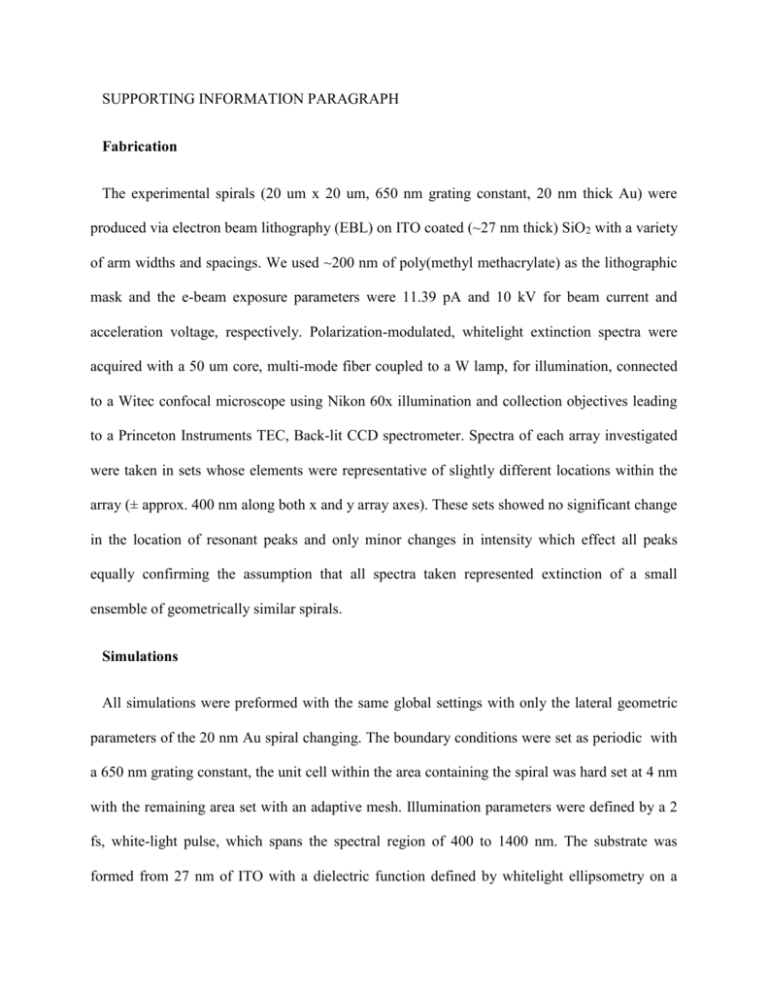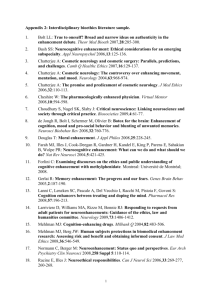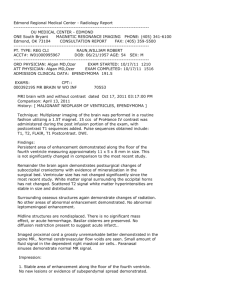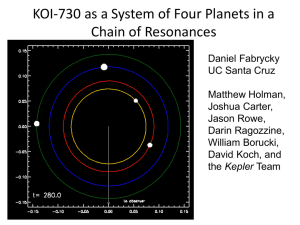SUPPORTING INFORMATION PARAGRAPH Fabrication The
advertisement

SUPPORTING INFORMATION PARAGRAPH Fabrication The experimental spirals (20 um x 20 um, 650 nm grating constant, 20 nm thick Au) were produced via electron beam lithography (EBL) on ITO coated (~27 nm thick) SiO2 with a variety of arm widths and spacings. We used ~200 nm of poly(methyl methacrylate) as the lithographic mask and the e-beam exposure parameters were 11.39 pA and 10 kV for beam current and acceleration voltage, respectively. Polarization-modulated, whitelight extinction spectra were acquired with a 50 um core, multi-mode fiber coupled to a W lamp, for illumination, connected to a Witec confocal microscope using Nikon 60x illumination and collection objectives leading to a Princeton Instruments TEC, Back-lit CCD spectrometer. Spectra of each array investigated were taken in sets whose elements were representative of slightly different locations within the array (± approx. 400 nm along both x and y array axes). These sets showed no significant change in the location of resonant peaks and only minor changes in intensity which effect all peaks equally confirming the assumption that all spectra taken represented extinction of a small ensemble of geometrically similar spirals. Simulations All simulations were preformed with the same global settings with only the lateral geometric parameters of the 20 nm Au spiral changing. The boundary conditions were set as periodic with a 650 nm grating constant, the unit cell within the area containing the spiral was hard set at 4 nm with the remaining area set with an adaptive mesh. Illumination parameters were defined by a 2 fs, white-light pulse, which spans the spectral region of 400 to 1400 nm. The substrate was formed from 27 nm of ITO with a dielectric function defined by whitelight ellipsometry on a SiO2 foundation whose depth is greater than the simulation area. Two laterally oriented monitors were placed within the simulation area, one beneath the particle recording the transmission through the monitor (monitor 1), normalized to the incident pulse, and another recording the normalized, spatially-resolved field intensity in the surface located one simulation cell above the upper face of the particle (monitor 2). Both monitors recorded the steady-state values of the transmission and field data over a period of approximately 200 fs, or when the field intensities decayed below 10-5. Analysis The program for analyzing spiral NFT patterns was designed to: 1) visualize the configuration of the NFT as a calibrated figure of merit, σ, 2) compare sites of enhancement to delineate coupling effects from nodes of a long-range organization, and 3) illustrate specific differences between resonances in a simplified two dimensional perspective. Accomplishing these objectives requires an architecture that correlates enhancements to their respective winding numbers. For an Archimedean spiral with a defined arm width and spacing, this requires the definition of two lines for the inner and outer sides of the spiral. Our program finds these lines using the layout of the index of refraction just below the monitor that observes the NFT, just within the particle; figure 2a illustrates the result for a standing-wave resonance, compared with the NFT image in figure 2b. The black lines along the edges of the spiral arm trace the locus of points that define the centers of individual 3x3 pixels. The sum of the normalized NF enhancement of each 3x3 spot is defined as the representative enhancement of the field intensity at the center point for the given winding number. Using these lines we define σ and three paths, inner, outer, and the sum of both. The establishment of a figure of merit, σ, (objective a) is primarily intended to identifies the dominant configuration of a non-hourglass resonance as either focusing or standing-wave. The distinguishing feature of these two configurations is the spread of the total field enhancement from the center of the spiral, with the focusing configuration having the majority of the total field enhancement centralized to the inner 2π and the standing-wave spreading the total enhancement along the entire spiral arm in similarly enhanced nodes. The expression for this degree of spatial spread is: 𝜎= ∑2𝜋 𝜔=0 𝑟𝑒𝑓𝑖𝑛𝑛𝑒𝑟 (𝜔) + 𝑟𝑒𝑓𝑜𝑢𝑡𝑒𝑟 (𝜔) ∑4𝜋 𝜔=0 𝑟𝑒𝑓𝑖𝑛𝑛𝑒𝑟 (𝜔) + 𝑟𝑒𝑓𝑜𝑢𝑡𝑒𝑟 (𝜔) which is the sum of all representative enhancement factors, ref(ω) along both the inner and outer paths for winding numbers from ω = 0 to 2π, divided by the sum of all representative enhancement factors along both the inner and outer paths for winding numbers from ω = 0 to 4π. This ratio serves two primary purposes: first, it provides a figure of merit that compares the distribution of field enhancement, with a bias towards the center, between spirals with differing geometric parameters; second, it illustrates how resonances can exist as a hybrid of the focusing and standing-wave NFSs. Though the focusing and standing-wave configurations are organizationally and mechanistically distinct, certain resonances can have near-field organizations that seem to incorporate both mechanisms into a hybrid configuration. For σ greater than or equal to 0.5, the resonance is focusing, while resonances between 0.5 and 0.43 are hybrids whose dominant configuration transitions smoothly from focusing to standing-wave as σ decreases; below 0.43 resonances are dominated by the standing-wave configuration. To demonstrate the degree of variation between different resonances of a nanospiral, figure 2c displays values of σ for all the resonances of the 50/50 spiral, including the resonance at 1240 nm, which is displayed in figures 2a and 2b.Using the paths without summation allows for a view of the relative enhancement factors along the arm, accomplishing objectives b) and c). By comparing enhancement factors at similar winding numbers, we can suggest the origin of a node of enhancement. If a node on one side does not match with some spike in enhancement on the other side, this suggests inter-arm coupling; otherwise, the node is a major feature of the configuration of the NFT for the resonance. Since we consider only the region along the edge of the physical structure, this method avoids confusion of closely spaced nodes being mismatched to one on the other side or across the gap. However, this does imply that these enhancement factors are relative quantities that should not be used to ascertain MEF or total enhancement for a particular resonance. It should be noted that, due to the increased number of points on the outer side, as compared to the inner side, a beating structure can occur when summing the inner and outer sides. This is especially prevalent for the inner 2π, as illustrated in figure M1 by the three sharp spikes located in the 0 to .5π region. Thus, in the interest of clear representation, we use only one side to depict the organization of a resonance when only illustration is desired. This artifact is only visible when illustrating the organization, so the values of σ are not adversely affected.








